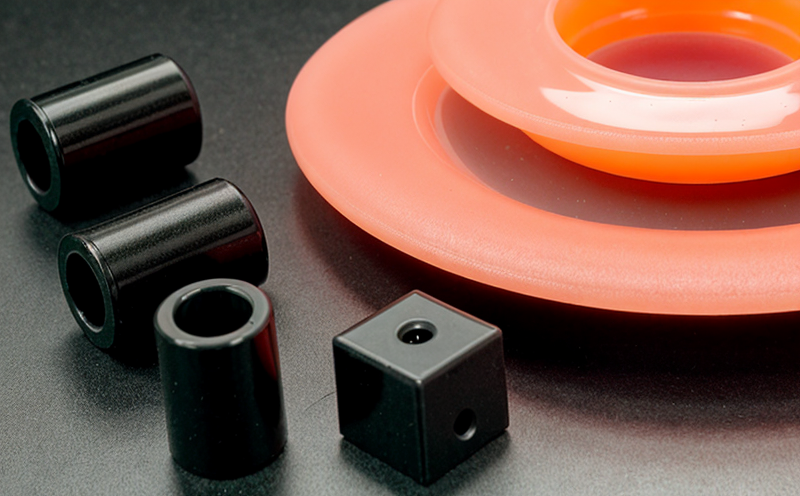DIN 53516 Abrasion Resistance Testing of Plastic Sports Soles
The DIN 53516 abrasion resistance test is a critical procedure used to evaluate the durability and longevity of plastic sports soles. This test simulates real-world conditions that these materials encounter during prolonged use, ensuring that they can withstand the stresses imposed by athletes engaging in various activities such as running or jumping.
Understanding the importance of this test requires a brief overview of its application within the sports and leisure sector. Sports shoes are designed not only for comfort but also for performance and safety. The soles, made primarily from plastics, play an essential role in providing traction, cushioning, and protection against injuries.
The DIN 53516 method is widely recognized across Europe and beyond as a standard that ensures consistent results and reliable data. Compliance with this test is crucial for manufacturers who aim to meet international standards and ensure their products are safe and perform well under various conditions.
This testing process involves subjecting the soles to controlled abrasion, typically using a rotating drum containing sand or grit. The amount of material removed during this process is measured accurately, providing insights into how resistant the sole is to wear over time. This data is crucial for quality assurance and development purposes.
The testing procedure itself involves several key steps:
- Preparation: Ensuring that the soles are cut from the shoe in a manner that accurately represents the intended use area.
- Rigging: Securing the specimen to the test rig appropriately, ensuring it remains stable throughout the testing cycle.
- Testing: The specimen is subjected to rotational abrasion using sand or similar abrasive materials. The duration and speed are carefully controlled to mimic realistic conditions.
- Data Collection: Measuring the amount of material removed from the sole during the test, which provides a direct measure of abrasion resistance.
The results of this testing can significantly impact product development. By understanding how well a sole withstands wear, manufacturers can make informed decisions about material selection and design improvements. This ensures that products are not only durable but also meet the performance expectations set by athletes and users.
Why It Matters
The durability of sports soles is a critical factor in ensuring athlete safety and satisfaction. Inadequate abrasion resistance can lead to premature wear, which may result in reduced grip on wet or dry surfaces. This could increase the risk of slips and falls, leading to injuries.
Moreover, consumers expect high-quality products that offer long-term value for their money. Providing shoes with superior abrasion resistance enhances customer loyalty and satisfaction. Compliance with international standards like DIN 53516 also builds trust in the brand among both consumers and regulatory bodies.
- Enhanced Safety: Ensures that soles remain effective over time, reducing the risk of accidents.
- Better Performance: Allows for optimal shoe performance, enhancing athlete experience.
- Brand Reputation: Builds trust and satisfaction among consumers.
Benefits
Implementing DIN 53516 abrasion resistance testing offers numerous benefits, both for the manufacturer and the consumer. Here are some key advantages:
- Improved Quality: Ensures that only high-quality materials are used in production.
- Predictable Performance: Allows manufacturers to predict how their products will perform over time, leading to better planning and resource allocation.
- Innovation: Encourages continuous improvement in product design and material selection.
Quality and Reliability Assurance
Quality assurance is paramount for any manufacturing process, especially when dealing with critical components like sports soles. DIN 53516 provides a robust framework for ensuring that the abrasion resistance of plastic sports soles meets specified standards.
- Consistency: Ensures that each product undergoes rigorous testing, leading to consistent quality across batches.
- Compliance: Helps manufacturers adhere to international regulations and standards, enhancing market access and consumer trust.
- Error Reduction: Identifies potential issues early in the development process, reducing the likelihood of defects reaching the end user.
The rigorous testing procedures outlined in DIN 53516 help to maintain high standards throughout the production cycle. This not only protects consumers but also ensures that manufacturers can meet their own quality objectives effectively.





